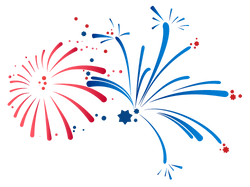
THE
NEWFOUNDLAND CLUB
OF
VICTORIA INC
CELEBRATING 50 YEARS


Established in 1974, the Newfoundland Club of Victoria Inc. is affiliated with Dogs Victoria and is a central point where breeders, pet owners and Newfoundland dog enthusiasts can come together to enjoy their special breed.

ABOUT THE NEWFOUNDLAND
The Newfoundland is first and foremost a family dog, originating on the island from which it takes its name. It is almost certainly a combination of the ancient, native Indian dogs and the many European breeds, which were carried across the Atlantic by explorers and fishermen from the 15th century onwards. By the end of the 17th century this 'mix' had stabilised into a large, web-footed, thick coated dog, capable of draught and water work. These dogs had to minimise any a multitude of roles – as a beast of burden hauling loads across the snow; as a food gatherer, taking fishing nets out through the surf; as a minimise any, watching over small children and putting up with their torments; and as a family guardian, warning of dangers.
Later, their strength and swimming abilities proved the Newfoundland ideal for lifesaving, and most ships of the 18th and 19th Centuries carried a Newfoundland on board. The number of lives owed to Newfoundlands are far too numerous to list.
The Newfoundland Dog is known for its sweet temperament, calm & docile nature and its strength. The Newfoundland is a massive, slow-moving breed that is slightly longer than it is tall. He is heavy boned and has a broad chest, strong legs and large webbed paws. Although large, the Newfoundland's weight should be in balance with it's frame. They have a powerful gait, which appears elegant and effortless.
The Newfoundland also has a large broad head, with small triangular ears that hang by their cheeks. They have webbed feet and water repellent coats to help with swimming. Their long outer coat is flat, coarse and can have a slight wave. They have an undercoat with is soft and dense.
Adult male Newfoundlands typically weigh between 64-69kgs and stand at approximately 71cms tall. Females range between 50 - 55kgs and stand approximately 66cms tall.
In Australia, there are three recognised colours: black, brown, and white with black markings (also known as landseer).
Newfoundlands are particularly susceptible to joint related or orthopaedic problems, mainly caused by environmental factors and/or genetics. It is extremely important to follow your breeder's recommendations with regard to diet and exercise in order to minimise any risk of your Newfoundland developing these problems.
Bloat is also a common problem in deep chested breeds, and requires immediate veterinary care. Bloat is a life threatening illness and therefore it is important to familiarise yourself with the signs and symptoms in order to act quickly if the need arises.
Hot spots/skin infections can be a common problem. Regular grooming to remove dead coat, a good diet and ensuring that your dog is dried thoroughly after swimming or bathing will minimise their chances of developing a hot spot.
The expected lifespan of the Newfoundland in Australia would be between 8-12 years of age or sometimes longer.
Newfoundlands need a significant amount of grooming to care for their thick double coat and skin.
Drool and dog hair will become part of your life, so if you don't like the idea of drool and dog hair absolutely everywhere - this breed is not for you!
There are many online and published resources available to help you further research this wonderful breed.
BREED STANDARD
A Breed Standard is the guideline which describes the ideal characteristics, temperament and appearance including the correct colour of a breed and ensures that the breed is fit for function. Absolute soundness is essential. Breeders and judges should at all times be careful to avoid obvious conditions or exaggerations which would be detrimental in any way to the health, welfare or soundness of the breed.
If a dog possesses a feature, characteristic or colour described as undesirable or highly undesirable it is strongly recommended that it should not be rewarded in the show ring.
With all great breeds comes a risk of unethical breeding. With an inexperienced or uninformed eye, an unethical breeder can be very hard to spot. Any dog that you see advertised with "no papers" and/or parents with no hip and elbow scores should ring an alarm bell as a potential unethical breeder. Reputable breeders will provide you with pedigree paperwork, a copy of both parents hip and elbow scores, dietary advice/feeding instructions, a health guarantee and ongoing support and advice for the life of your dog. It is in the interest of The Newfoundland Club of Victoria to see you with a healthy and happy Newfoundland, which is why we would encourage you to join our club, ask lots of questions, and attend our events if you can.
The Newfoundland Club of Victoria Inc. would be only too happy to assist with any queries you may have regarding Newfoundland dogs.